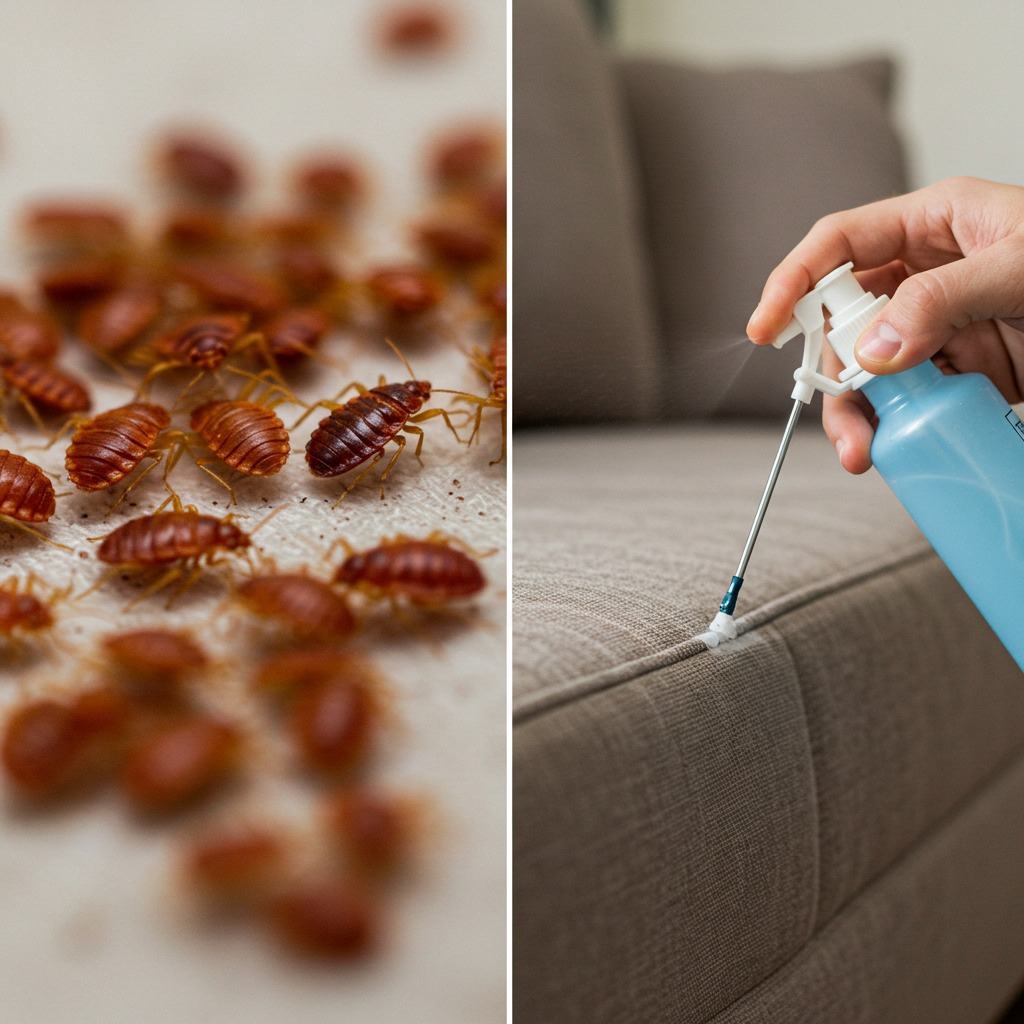ADVERTISEMENT
## **The Secret Ingredient: Diatomaceous Earth**
So, what’s the natural solution hiding in your cupboards and garden that can help eliminate bedbugs in record time? The answer is **diatomaceous earth (DE)**.
### **What is Diatomaceous Earth?**
Diatomaceous earth is a fine, white powder made from the fossilized remains of tiny, aquatic organisms known as diatoms. These diatoms have hard, silica-based exoskeletons, which give diatomaceous earth its abrasive texture. There are two main types of diatomaceous earth: food-grade and industrial-grade. For pest control, it’s essential to use **food-grade diatomaceous earth**, as it’s safe for humans and pets.
Despite its powdery appearance, diatomaceous earth is a powerful weapon against insects, including bedbugs. The reason it works so effectively is due to its abrasive and desiccating properties. When insects come into contact with diatomaceous earth, the tiny particles pierce their exoskeletons, causing them to lose moisture and eventually die from dehydration.
### **Why Diatomaceous Earth Works Against Bedbugs**
Bedbugs, like other insects, have an exoskeleton made of a hard, protective outer layer. This exoskeleton is crucial for their survival, as it helps retain moisture and prevents dehydration. When bedbugs encounter diatomaceous earth, the sharp, microscopic particles of DE pierce through their exoskeletons. This leads to the loss of moisture from their bodies, causing them to dehydrate and die.
Diatomaceous earth doesn’t just work on bedbugs. It’s effective against a wide variety of pests, including ants, cockroaches, fleas, and other insects that have an exoskeleton. However, it’s important to note that DE works best in dry conditions, so it should be applied to areas where bedbugs are known to hide and where moisture is minimal.
—
## **How to Use Diatomaceous Earth to Eliminate Bedbugs**
Using diatomaceous earth to eliminate bedbugs is easy, but it requires patience and persistence. It can take several days or even weeks for the full effects to be noticeable, as bedbugs must come into direct contact with the powder for it to work. Here’s a step-by-step guide on how to use diatomaceous earth to get rid of bedbugs:
### **Step 1: Clean and Prepare the Infested Area**
Before applying diatomaceous earth, it’s essential to clean the infested area thoroughly. Remove any bedding, clothes, and other items from the affected room. Wash all bedding in hot water to kill any bedbugs or eggs that might be present. Vacuum the area, paying close attention to cracks and crevices where bedbugs are likely hiding, such as the seams of mattresses, behind baseboards, and in the corners of the room.
### **Step 2: Apply Diatomaceous Earth**
Once the area is clean, it’s time to apply the diatomaceous earth. Sprinkle a thin, even layer of DE over the areas where you’ve seen signs of bedbugs. Focus on areas where bedbugs are likely to hide, such as:
– **The seams and cracks of mattresses and box springs**
– **Behind furniture**
– **In the corners of the room**
– **Around baseboards and door frames**
Use a small brush or applicator to spread the powder into hard-to-reach areas. Be sure to cover the entire surface area where bedbugs may be hiding. Avoid applying too much powder, as a light dusting is sufficient for the DE to work effectively.
### **Step 3: Leave the Powder in Place**
Diatomaceous earth needs time to work its magic. Leave the powder in place for at least 48 hours—72 hours is even better. During this time, bedbugs will come into contact with the powder as they move around, and it will begin to dehydrate them.
### **Step 4: Vacuum and Reapply**
After the waiting period, vacuum up the diatomaceous earth using a vacuum with a HEPA filter. This will help remove the dead bedbugs, eggs, and the remaining DE powder. Be sure to empty the vacuum bag or canister immediately after vacuuming to prevent any live bedbugs from escaping.
You may need to reapply diatomaceous earth several times, especially if you have a severe infestation. It’s also important to continue monitoring the area for signs of bedbugs and repeat the process as necessary.
For Complete Cooking STEPS Please Head On Over To Next Page Or Open button (>) and don’t forget to SHARE with your Facebook friends
